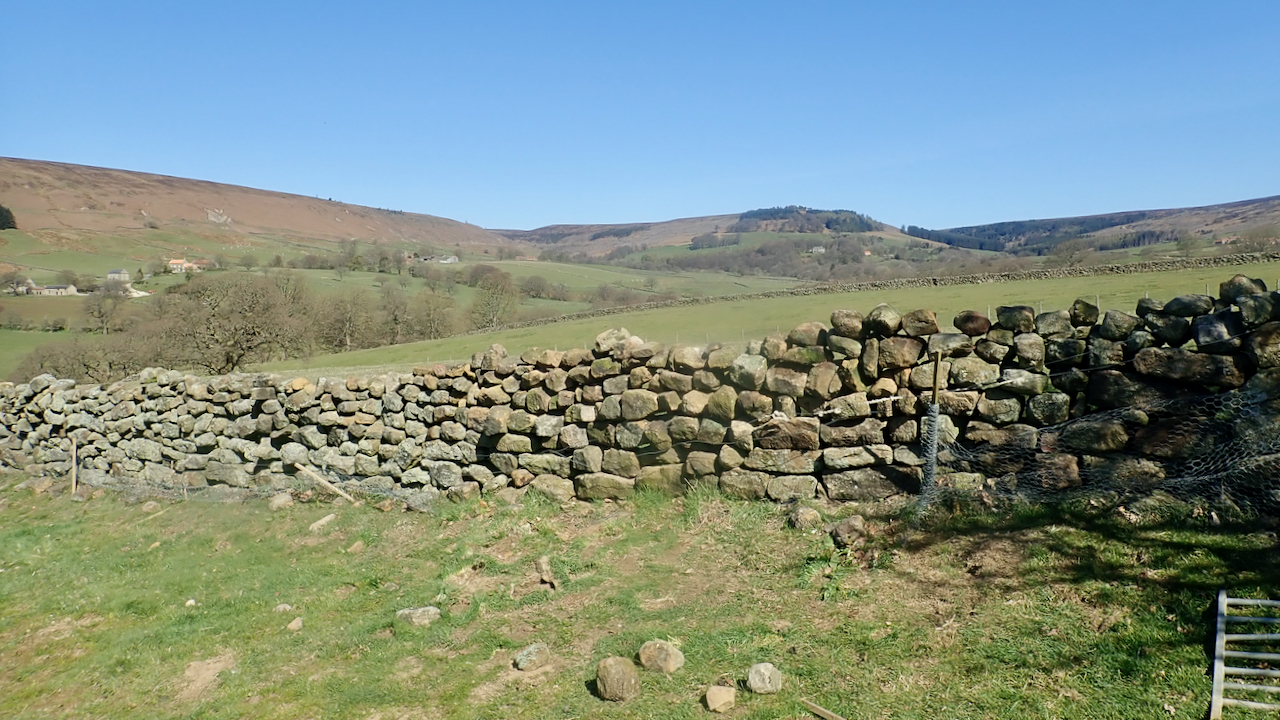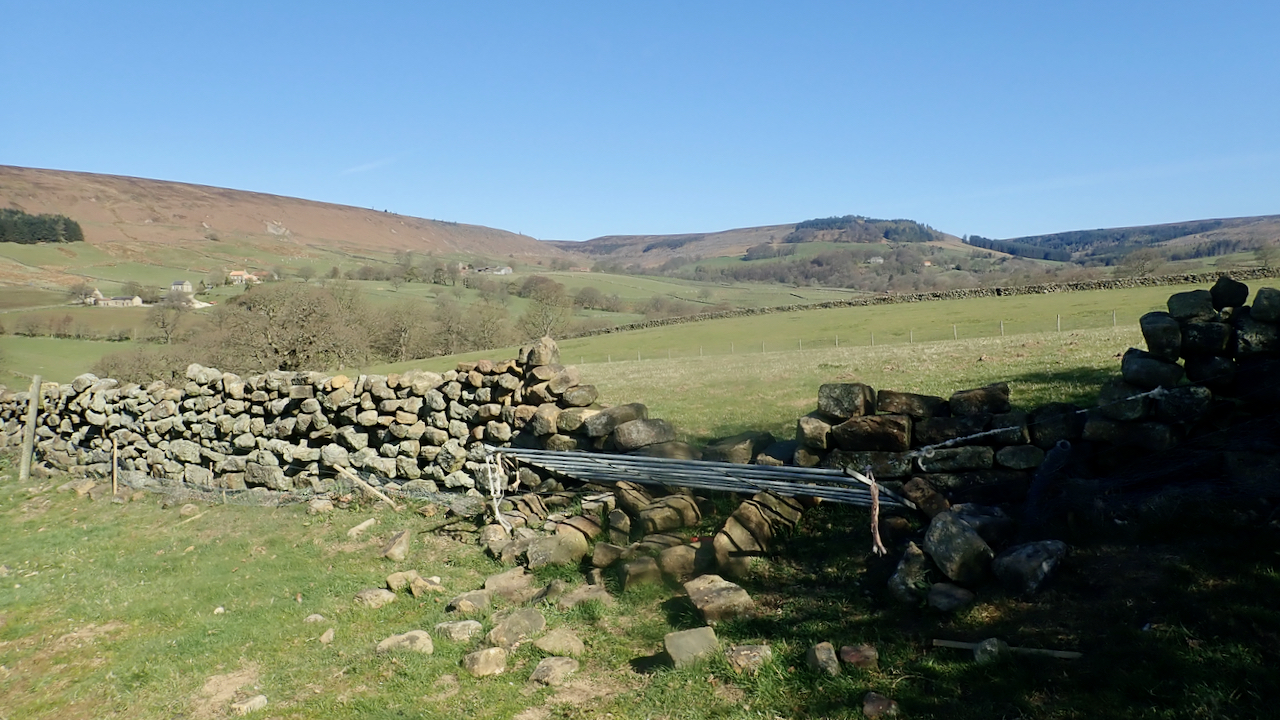Today, there are about fifteen occupied farms and cottages scattered throughout Bransdale, making a population of around about 40. At the beginning of the 19th-century it was about 400. There were shoemakers, innkeepers, millers, shopkeepers, schoolteachers, dairymen, jetminers, as well as the expected farmers and agricultural workers.
Far outnumbering the humans in the dale are the rabbits. A farmer was telling me today that a few years ago the dale’s folk got together and had a blitz and 5,000 were shot in three months. Yet spring traps for predators are a regular find around the dale. And only last year, five dead buzzards were found hidden on the grouse moor between Bransdale and Farndale.
In case you are wondering, the National Trust property does not extend onto the surrounding moors, and the Trust is bound to honour the shooting rights within the dale, which includes predator control.
One of the tasks today in Bransdale was to repair a dry-stone wall enclosing a field in which the Trust is planning to seed with an agricultural hay mix. Unfortunately, as well as no longer keeping the sheep out, the collapse had flattened the rabbit fencing (half buried chicken netting).

The trouble with Bransdale dry stone walls is that they are single skin, of largely undressed sandstone blocks, producing a precarious construction. Another thing I reckon is that with the prevailing wind blowing up the dale, there is often a creep of courses and the wall starts to develop a definite lean. Yet Bransdale walls, with more holes than a colander, are remarkably resilient – until the sheep try to climb them or the rabbits undermine.

Leave a Reply